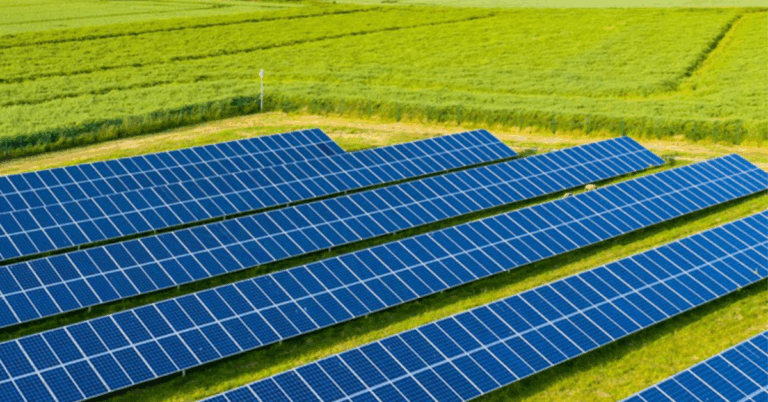Revolutionizing Rice Processing: The Power of Modern Machinery
Rice, a staple food for over half the world’s population, undergoes a meticulous transformation from raw paddy to the polished grains we consume daily. This intricate journey, vital for ensuring food security and quality, is made possible by sophisticated Rice Processing Machine. For millers and agricultural businesses, investing in advanced equipment is not just about increasing output; it’s about optimizing efficiency, minimizing waste, and delivering superior rice products to the market.
At Ricetec Machinery, we understand the critical role that cutting-edge technology plays in the rice industry. With over two decades of experience, we have dedicated ourselves to manufacturing, supplying, and exporting innovative and technologically advanced grain processing machinery. Our comprehensive range of solutions is designed to empower millers, maximize their profitability, and contribute to the global food supply chain.
The Journey of Rice: From Paddy to Plate
The process of transforming raw paddy into edible rice involves several key stages, each requiring specialized machinery to ensure optimal results. Understanding these stages highlights the importance of a well-integrated rice processing plant.
1. Pre-Cleaning and De-stoning: The Foundation of Quality
The first crucial step in rice processing is cleaning the raw paddy. Harvested paddy often contains impurities such as straw, dust, soil, and foreign particles. Pre-cleaners like Ricetec’s Pre Cleaner Smart and Precleaner Mega Series are designed to efficiently remove these larger contaminants, preparing the paddy for subsequent stages.
Following pre-cleaning, de-stoners play a vital role in separating stones and other heavy impurities from the paddy. These machines use a combination of vibration and air currents to stratify the material, allowing heavier objects to be separated from the lighter paddy. A clean raw material stream is fundamental to protecting downstream machinery and ensuring the purity of the final rice product.
2. De-husking (Shelling): Revealing the Brown Rice
Once cleaned, the paddy moves to the de-husking stage, where the outer husk (hull) is removed to reveal the brown rice. Pneumatic rubber shellers with vibro feeders, such as those offered by Ricetec, are highly efficient in this process. They utilize precisely engineered rubber rollers that rotate at different speeds, gently stripping the husk without damaging the valuable rice kernel. The vibro feeder ensures a consistent and even flow of paddy, maximizing de-husking efficiency and minimizing broken grains.
After de-husking, a husk aspirator is used to separate the lightweight husks from the heavier brown rice. This ensures that only the de-husked grains proceed to the next stage, maintaining the integrity of the processing line.
3. Paddy Separation: Distinguishing Un-husked Grains
Despite efficient de-husking, some paddy grains may remain un-husked. This is where paddy separators come into play. Machines like Ricetec’s Paddy Separator – Butterfly Single and Double are designed to separate un-husked paddy from brown rice based on their differences in specific gravity and friction. This critical step ensures that only de-husked rice moves on to polishing, preventing wear and tear on polishing machinery and ensuring a consistent final product.
4. Whitening (Polishing): Achieving the Desired Sheen
The brown rice, though nutritious, is often further processed to produce white rice, which is preferred by many consumers. This involves removing the bran layer through a process called whitening or polishing. Rice whiteners and silky rice polishers are used for this purpose. Ricetec’s Rice Whitener and Rice Silky Polishers are engineered to achieve a uniform polish with minimal broken grains, preserving the quality and market value of the rice. The degree of whitening can be adjusted to meet specific market demands, from lightly polished to highly polished rice.
5. Grading and Sifting: Ensuring Uniformity and Quality
After polishing, the rice kernels need to be sorted based on size, shape, and quality. This is where graders and sifters become indispensable. Rice sifter machines separate rice based on size, removing broken grains and impurities. Thin and thick graders, as well as rice length graders, further refine the sorting process, ensuring a uniform batch of rice with consistent grain dimensions. This meticulous grading is crucial for meeting quality standards and consumer expectations.
6. Value-Added Processes: Fortification and Blending
In today’s evolving food landscape, there’s a growing emphasis on nutritional value. Fortified rice kernel (FRK) blending machines are gaining significant importance in this regard. Ricetec’s FRK Weighmetric Blending Machine allows for the precise blending of fortified rice kernels with regular rice, enhancing the nutritional profile of the final product. This is a crucial step towards addressing micronutrient deficiencies and improving public health.
7. Ancillary Equipment: The Backbone of the Mill
Beyond the core processing machines, a modern rice mill relies on a range of ancillary equipment to ensure smooth and efficient operations. Bucket elevators are essential for vertical transport of grains throughout the different stages of processing. Blowers and cyclones manage air flow and collect dust, maintaining a clean and safe working environment. These seemingly minor components are vital for the overall efficiency and longevity of the rice processing plant.
The Ricetec Advantage: Why Choose Us?
Choosing the right rice processing machinery is a significant investment for any business. At Ricetec Machinery, we pride ourselves on delivering solutions that stand out in the market.
Unwavering Commitment to Quality
Quality is the cornerstone of our operations. We utilize superior-grade raw materials and cutting-edge manufacturing techniques to produce machines that are robust, durable, and perform consistently. Our ISO 9001:2015 and CE certifications are a testament to our adherence to international quality standards. Every machine undergoes stringent quality control checks before it leaves our facility, ensuring trouble-free operation and a long functional life.
Innovation Through Research and Development
The rice processing industry is constantly evolving, and so are we. Our dedicated in-house research and development team is continuously exploring new technologies and improving existing designs. This commitment to innovation allows us to offer machinery that is not only efficient but also incorporates the latest advancements, such as energy-saving features and automation, to maximize our customers’ profitability and minimize process losses.
Comprehensive Solutions and Customization
We offer a comprehensive range of machinery, from individual units to complete, integrated processing systems. Whether you are looking for a specific machine to upgrade an existing line or a turnkey solution for a new rice mill, Ricetec has the expertise and products to meet your needs. We also understand that every client has unique requirements, which is why we offer customized solutions tailored to specific capacities and operational demands.
Reliability and Customer Trust
With over 3000 satisfied customers across India and neighboring countries, Ricetec has built a strong reputation for reliability and trust. Our machinery is designed for optimal performance, high energy efficiency, and low cost of ownership. This translates into tangible benefits for our clients, helping them achieve consistent production and higher returns on investment.
Exceptional Service and Support
Our commitment to our customers extends beyond the sale of machinery. We provide comprehensive services, including on-site installation and support, ensuring a seamless setup and operation of the equipment. Our state-wise service hubs across India provide prompt and efficient assistance, minimizing downtime and maximizing productivity. We believe in building long-term partnerships with our clients, offering 24×7 service support and expert advice.
The Future of Rice Processing
The demand for rice continues to grow globally, driven by population increase and evolving dietary habits. As such, the need for efficient and sustainable rice processing solutions is more critical than ever. Modern rice processing machinery plays a pivotal role in this future, enabling millers to:
- Increase Efficiency and Productivity: Automated and high-capacity machines reduce processing time and labor costs, leading to higher output.
- Improve Rice Quality: Advanced sorting and polishing technologies ensure a superior final product, meeting stringent quality standards.
- Reduce Post-Harvest Losses: Effective cleaning, de-stoning, and separation processes minimize grain loss, contributing to food security.
- Enhance Nutritional Value: Fortified rice blending machines facilitate the production of nutritionally enhanced rice, addressing public health challenges.
- Promote Sustainability: Energy-efficient designs and reduced waste generation contribute to more environmentally friendly operations.
Ricetec Machinery is at the forefront of this transformation, continuously striving to provide solutions that not only meet the current needs of the industry but also anticipate future demands. Our focus on quality, innovation, and customer satisfaction makes us a trusted partner for anyone looking to excel in the rice processing business.
Frequently Asked Questions about Rice Processing Machines
Q1: What is the primary purpose of a rice processing machine?
A1: The primary purpose of a rice processing machine is to transform raw paddy (un-husked rice) into edible, polished rice by removing impurities, the husk, and the bran layers, and then sorting the grains by quality and size.
Q2: What are the main stages of rice processing?
A2: The main stages typically include pre-cleaning, de-stoning, de-hulling (shelling), paddy separation, whitening (polishing), and grading/sifting. Additional stages may include parboiling, drying, and fortification.
Q3: How does a de-stoner work?
A3: A de-stoner works by using vibrations and air currents to create a fluid bed of paddy. Due to differences in specific gravity, heavier materials like stones sink to the bottom and are discharged separately, while the lighter paddy flows over.
Q4: What is the difference between a rice whitener and a silky rice polisher?
A4: A rice whitener removes the bran layer from brown rice to produce white rice. A silky rice polisher further refines the surface of the white rice, giving it a smoother, more lustrous appearance and often a higher market value.
Q5: Why is grading important in rice processing?
A5: Grading is important to sort rice kernels by size, shape, and quality. This ensures uniformity in the final product, removes broken grains and other defects, and allows for different grades of rice to be marketed, meeting specific consumer preferences and quality standards.
Q6: What is a Fortified Rice Kernel (FRK) blending machine?
A6: An FRK blending machine accurately mixes fortified rice kernels (rice grains artificially enriched with essential vitamins and minerals) with regular rice. This is done to improve the nutritional content of the rice, addressing micronutrient deficiencies.
Q7: How often do rice processing machines require maintenance?
A7: The frequency of maintenance depends on the machine type, operational hours, and the specific manufacturer’s recommendations. Generally, regular daily inspections, weekly cleaning, and periodic professional servicing are recommended to ensure optimal performance and longevity.
Q8: Can Ricetec Machinery provide a complete rice mill solution?
A8: Yes, Ricetec Machinery offers total engineering solutions for complete rice mill plants, from individual machines to integrated processing systems, tailored to various capacities and customer requirements.
Q9: Are Ricetec Machinery products energy efficient?
A9: Yes, Ricetec Machinery is committed to developing energy-efficient machines that minimize power consumption while maximizing output, contributing to lower operational costs for millers.
Q10: What kind of after-sales support does Ricetec Machinery provide?
A10: Ricetec Machinery provides comprehensive after-sales support, including on-site installation, training, and 24×7 service support through state-wise service hubs across India, ensuring prompt assistance and minimal downtime.







